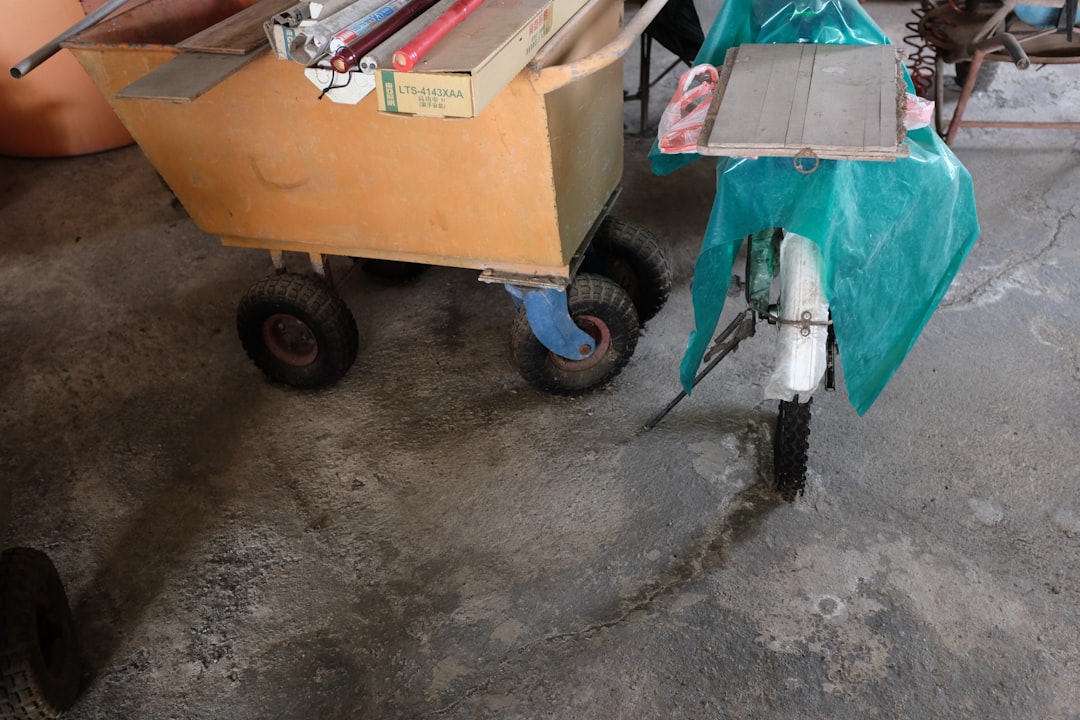

Engage prospects with a scan and streamline customer engagement with FREE QR code marketing tools by Sona – no strings attached!
Create a Free QR CodeFree consultation

No commitment

Engage prospects with a scan and streamline customer engagement with FREE QR code marketing tools by Sona – no strings attached!
Create a Free QR CodeFree consultation

No commitment
QR codes have evolved into a strategic tool for bridging offline engagement with online action in today's digitally driven world. For dryer vent cleaning services businesses, QR codes offer a streamlined and highly effective way to support technicians, improve customer communication, and reinforce safety protocols, all without complex setups or additional apps.
Many dryer vent cleaning businesses struggle with cumbersome paper trails, missed follow-ups, and challenges in tracking important customer interactions, which lead to inefficiencies and missed opportunities. QR codes can transform daily operations by connecting printed materials, equipment labels, or on-site signage directly to in-depth cleaning guides, instructional videos, booking pages, and safety resources. This change clarifies technician workflows and ensures property owners have immediate, traceable access to expertise.
This article examines how dryer vent cleaning teams can incorporate QR codes into their processes to create safer environments, deliver enhanced customer experiences, and drive sustainable business results by addressing key industry challenges.

For many teams, paper-based checklists and manual documentation slow down technicians and create information gaps, making it difficult to track completed jobs, customer engagement, and compliance. This often leads to missed high-value accounts, inconsistent service visits, and limited visibility across crews. The lack of real-time data also hinders leadership decisions about staffing, training, and safety protocols.
Advanced QR code systems allow operators to digitize analog processes. Technicians can scan to access standardized procedures, upload proof-of-work, and trigger automated notifications. Customers can scan to book, confirm, or review, which closes the loop without extra administrative overhead. With a platform like Sona QR, teams can generate dynamic codes, update content centrally, and monitor performance from the field to the back office.
Digitizing these steps leads to safer, more efficient, and fully documented technician visits. Automated dashboards that highlight engagement patterns help leadership reduce wasted effort, maintain compliance across properties, and deploy resources with confidence. Over time, internal playbooks evolve from guesswork to repeatable, data-backed best practices.

Operations falter when field teams miss small moments of engagement. A resident glances at a maintenance sticker but does not know how to book a follow-up. A property manager receives a printed report that is not easily shareable. A technician needs a specific manufacturer guideline but cannot find the right file. Without a clear bridge between physical materials and digital resources, these touchpoints go untracked and unleveraged.
QR codes resolve these gaps by making every surface a starting point for action. One scan can open a booking page, launch a video tutorial, prefill a request form, or verify a recent inspection. Since a scan is easily trackable, you can see which assets drive results and adjust placements, messaging, and training accordingly. The outcome is fewer missed opportunities and a customer experience that feels fast and confident.
With QR codes, everyday materials such as door hangers and inspection tags convert into measurable, interactive touchpoints. Instead of hoping people take the next step, you can guide it, track it, and tune it for stronger outcomes.
Teams often need multiple formats to support different tasks in the field. The right format ensures scanners land on the most helpful experience for that moment, whether it is a quick contact save, a detailed checklist, or a full booking form. Choosing wisely improves scan rates and conversions, while dynamic control keeps assets relevant year round.
Popular formats include:
Dynamic QR codes are recommended for most field placements. They let you change destinations when content updates, campaigns rotate, or safety advisories change. Static codes work for evergreen resources such as a general contact page, but they limit tracking and flexibility when your operations evolve.

Many dryer vent cleaning businesses rely on traditional placements such as mailers and flyers, yet struggle to convert interest into action. The problem is not awareness, it is friction. People see a reminder but do not call, or a technician completes a job without collecting a review. Growth happens when you add QR codes to moments that already occur in your workflow and remove the extra steps between intent and action.
Think of every touchpoint as a potential doorway into your booking system, customer education, or compliance logs. When codes appear where people make decisions, conversion climbs and attribution becomes clear. Instead of debating which channels matter, you will see which cards, stickers, or signs are pulling their weight.
Aligning QR code placements to these moments ensures actionable data is captured consistently. You will identify engaged prospects faster, secure repeat business with less effort, and elevate the customer experience by making the path forward unmistakable.

Inconsistent training, paper-driven booking, and inaccessible documentation are common barriers to scale. QR codes provide low-friction solutions that standardize quality, streamline scheduling, and simplify compliance. The following use cases help teams raise service consistency and customer satisfaction without adding complexity.
When planning, map each use case to a physical artifact and a digital outcome. For example, a sticker in the laundry room can open a safety checklist, while a badge on a technician’s tablet case can open a troubleshooting playbook. The clearer the connection between context and content, the higher the scan rate and the better the outcomes.
Every scan is a signal. It reveals what the person wants, where they are, and when they are ready to take the next step. By deploying multiple QR codes across touchpoints, you can automatically segment your audience and trigger relevant follow-up. Instead of guessing which prospects are most valuable, you will know who has watched a safety video, who has requested a quote, and who has verified an inspection.
Audience segmentation improves closing rates and reduces wasted outreach. Homeowners who scan a seasonal promo need a quick offer and a reminder. Property managers who scan a safety checklist want compliance proof and scheduling options for multiple units. With a tool like Sona QR connected to your CRM, each scan can feed a profile that supports timely emails, SMS, or sales calls.
This approach transforms anonymous interactions into qualified audiences. Over time, your retargeting becomes more precise, your messaging more relevant, and your cost per booking more efficient.
QR codes connect offline impressions with online action across every channel you use. When a flyer leads to a booking form or a vehicle wrap leads to a review page, each scan shows which creative and placement delivered. This connected view lets you refine your spend and messaging, not by guesswork but by proof.
A strong multi-channel plan puts QR codes where people naturally pause. Laundry room signs, invoices, and appointment cards are already part of the customer journey. By adding clear calls to action and dynamic codes, you turn these assets into measurable drivers of appointments and satisfaction scores.
Sona’s blog post titled First-touch vs last-touch attribution models explains trade-offs when comparing channel impact, helping you assess which placements deserve more investment.
With scan data linked to your CRM, you know which physical media and messages perform best. A centralized platform like Sona QR lets you manage codes, monitor performance, and sync insights with marketing and sales tools to drive continuous improvement.
Launching your first QR program can feel complex, but it is straightforward when you follow a clear plan. Break the work into a few phases, align your team on goals and metrics, and test in the field before scaling to every asset. These steps will help you minimize risk while maximizing adoption by technicians, property managers, and homeowners. For HVAC-specific tactics, see HVAC marketing strategies.
Treat the checklist as a repeatable playbook. Each time you roll out a new use case, the process becomes faster and the results more predictable. Over time, your organization will have a library of high-performing codes, each tied to a measurable outcome and easily maintained through a central platform.
A platform such as Sona QR can automate much of this workflow, from generating dynamic codes and capturing analytics to syncing scan events with your CRM. With a small pilot and a disciplined iteration process, you can demonstrate ROI quickly, then scale across your fleet and property network.

Many teams collect marketing data from websites and ads but lack clear attribution for field materials. Without tying scans to bookings and reviews, leadership cannot see which assets drive revenue or compliance. QR analytics close this loop by turning every scan into a data point that maps to a person, a property, and an outcome.
Modern analytics tell a full story, not just a count of scans. You will know where the scan happened, which device was used, what action followed, and whether the interaction led to a sale or review. These insights inform smarter budget allocation, stronger training, and faster process improvements that directly impact performance and safety. Sona’s blog post titled Single vs multi-touch attribution models can help you choose the right framework for reporting.
With Sona QR and Sona, an AI-powered marketing platform that turns first-party data into revenue through automated attribution, data activation, and workflow orchestration, you can go beyond basic analytics to identity resolution and multi-touch attribution across buying stages. Link QR scans with website visits, ad interactions, and email responses to build a cohesive view of the customer journey. The result is not just insight, but intelligence you can act on to drive growth.
Once the basics are in place, optimization determines your long-term ROI. Small changes to copy, placement, and follow-up can result in meaningful gains. Train your teams to introduce QR benefits naturally, and use automation to ensure no scan goes unsupported by the right message at the right time.
Creative deployments keep your program fresh and useful. For example, add a QR code to invoices that opens a safety checklist and a limited-time renewal discount. Or place a code on a magnet handed to homeowners that links to a seasonal maintenance reminder, giving you permission to follow up when lint buildup risk increases.
These practices improve scan rates, conversions, and customer satisfaction. Over time, your QR program evolves into a reliable growth engine that also strengthens safety and compliance.
QR codes empower dryer vent cleaning service teams to transform field interactions into digital entry points that drive efficiency, safety, and measurable satisfaction. When codes are woven into work orders, equipment labels, invoices, and signage, they remove friction for customers and provide technicians with the information they need at the point of service. Every scan becomes a data point that clarifies what works, where, and for whom.
Here is the bottom line for operators. QR codes turn physical assets into actions, and actions into insights you can use to grow. The approach improves booking rates, streamlines documentation, and makes ongoing safety education part of the day-to-day experience for customers and staff. With a platform like Sona QR, you can generate dynamic codes, update destinations in real time, and connect scan data to your CRM to attribute revenue and optimize campaigns. Start with a focused pilot, learn quickly, and scale across your fleet and properties to capture value at every touchpoint. Start creating QR codes for free.
QR codes have revolutionized dryer vent cleaning services by transforming routine maintenance into seamless, efficient, and measurable interactions. From accelerating technician workflows to enhancing customer communication and ensuring timely service follow-ups, QR codes empower your team to deliver safer, faster, and more reliable vent cleaning experiences. Imagine instantly accessing service histories, safety checklists, and customer feedback—all with a simple scan that streamlines operations and builds trust.
With Sona QR, you can create dynamic, trackable QR codes tailored for dryer vent cleaning technicians and clients alike. Update service campaigns instantly without reprinting, monitor scan engagement in real time, and connect every interaction to improved safety outcomes and customer satisfaction. No missed appointments, no guesswork—just smarter, data-driven service management.
Start for free with Sona QR today and transform every scan into a safer home, a satisfied customer, and a thriving dryer vent cleaning business.
QR codes streamline technician workflows, enhance customer communication, support safety protocols, and enable tracking and automation without complex setups or extra apps.
Useful formats include web links for booking and safety checklists, vCards for contact saving, forms for surveys and reports, safety resources, app download links, and SMS or email triggers.
Codes should be placed on appointment cards, technician checklists, equipment stickers, flyers, door hangers, building signage, vehicles, uniforms, and laundry room tags to align with customer decision points.
QR code scans provide data on location, technician, asset, and timing, enabling measurement of engagement, conversion rates, and operational efficiency to inform training and resource allocation.
Dynamic QR codes allow content updates, enable tracking and analytics, and support flexible campaign management, while static codes are fixed and limit data insights.
By deploying multiple QR codes across touchpoints and tagging scans by action, role, and location, businesses can segment audiences and trigger relevant follow-ups through CRM and advertising platforms.
The process includes choosing a clear use case, selecting the QR code type, designing and testing the code, deploying it on high-impact channels, and tracking and optimizing performance.
QR codes link to up-to-date safety checklists, manufacturer manuals, and inspection logs, enabling traceable records and easier verification for property managers and technicians.
They reduce paper-based workflows, prevent missed follow-ups, standardize procedures, and enable real-time proof of work and task completion tracking.
They provide quick access to booking, instructional videos, safety resources, and service verification without app downloads, reducing friction and increasing satisfaction.
Use Sona QR's trackable codes to improve customer acquisition and engagement today.
Create Your FREE Trackable QR Code in SecondsJoin results-focused teams combining Sona Platform automation with advanced Google Ads strategies to scale lead generation

Connect your existing CRM

Free Account Enrichment

No setup fees
No commitment required

Free consultation

Get a custom Google Ads roadmap for your business






Launch campaigns that generate qualified leads in 30 days or less.
